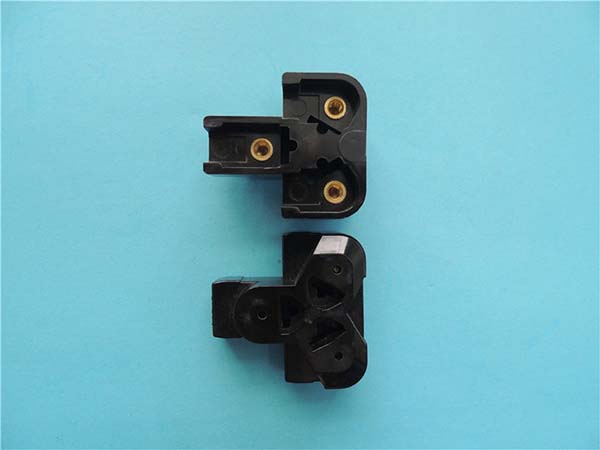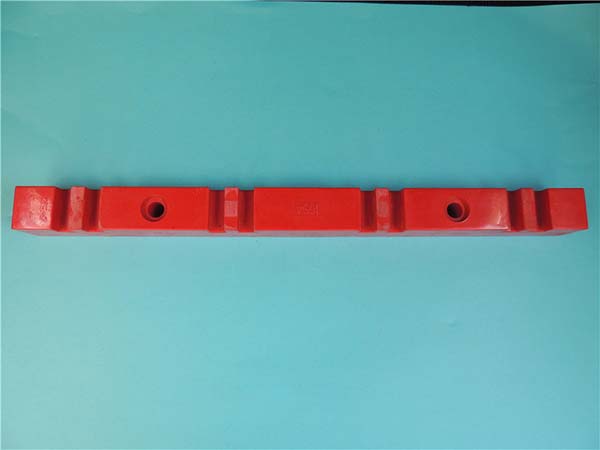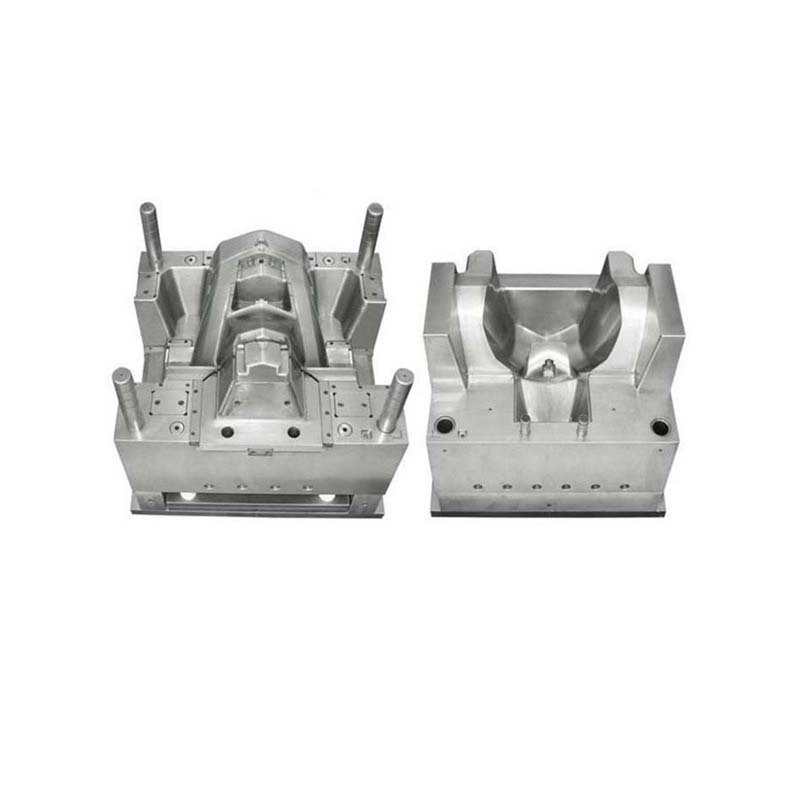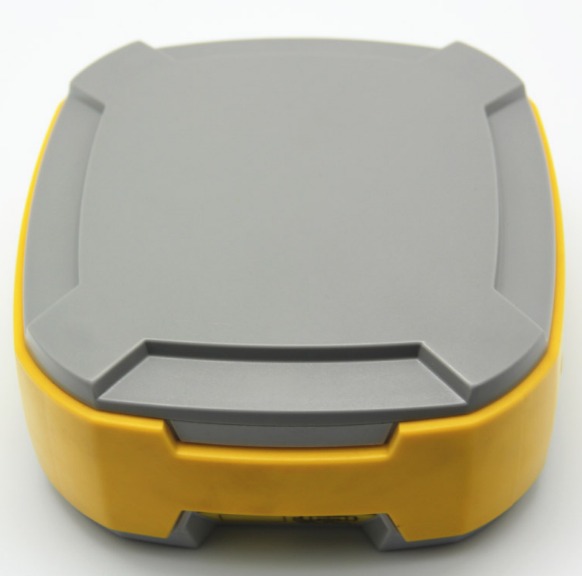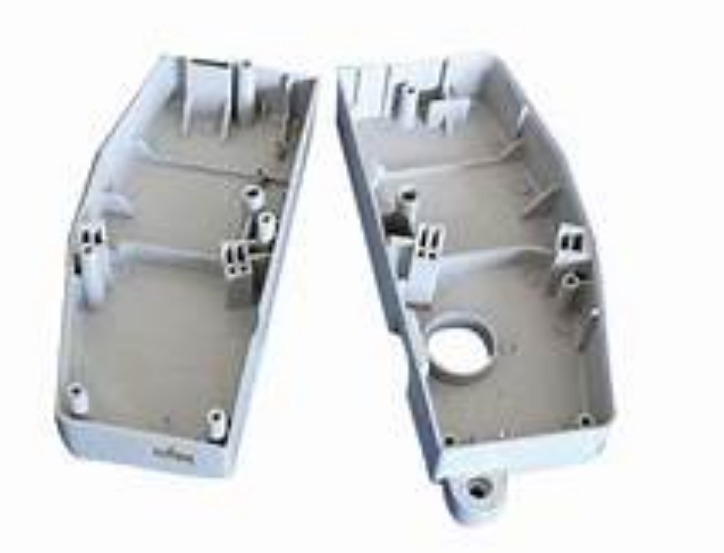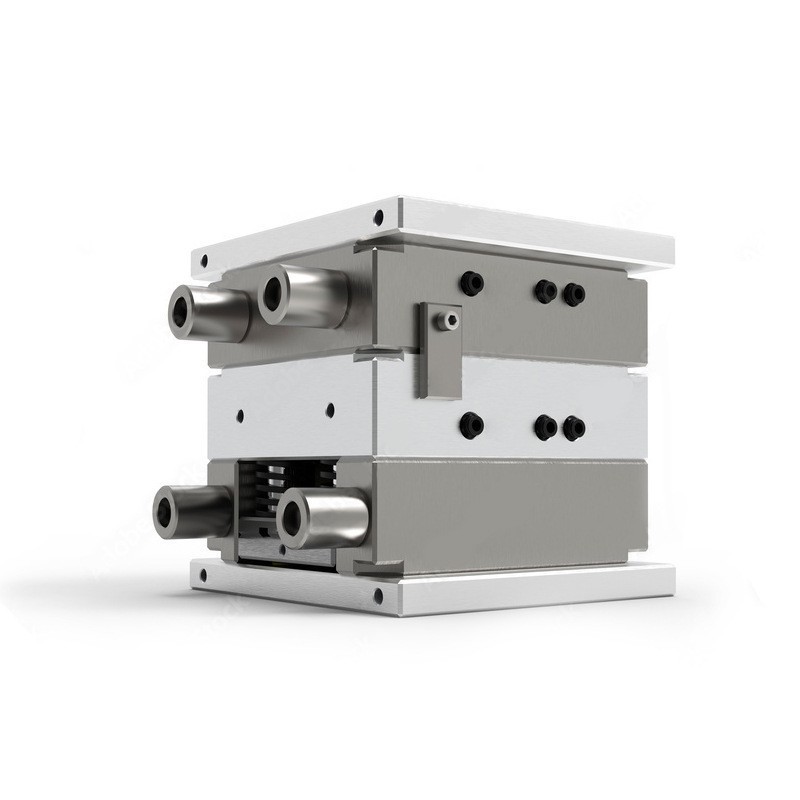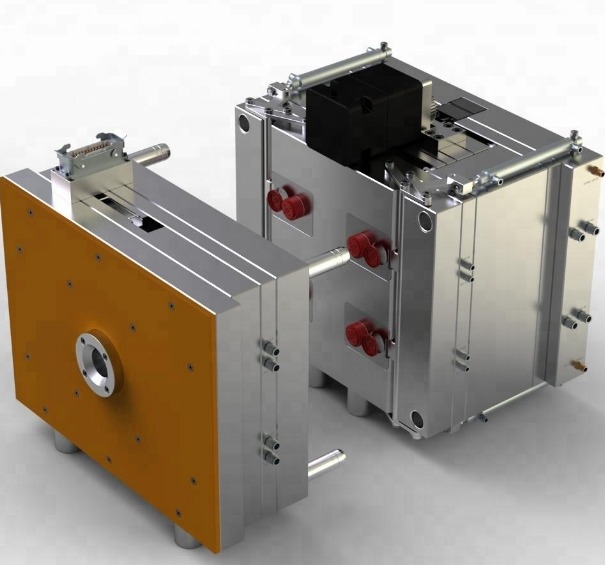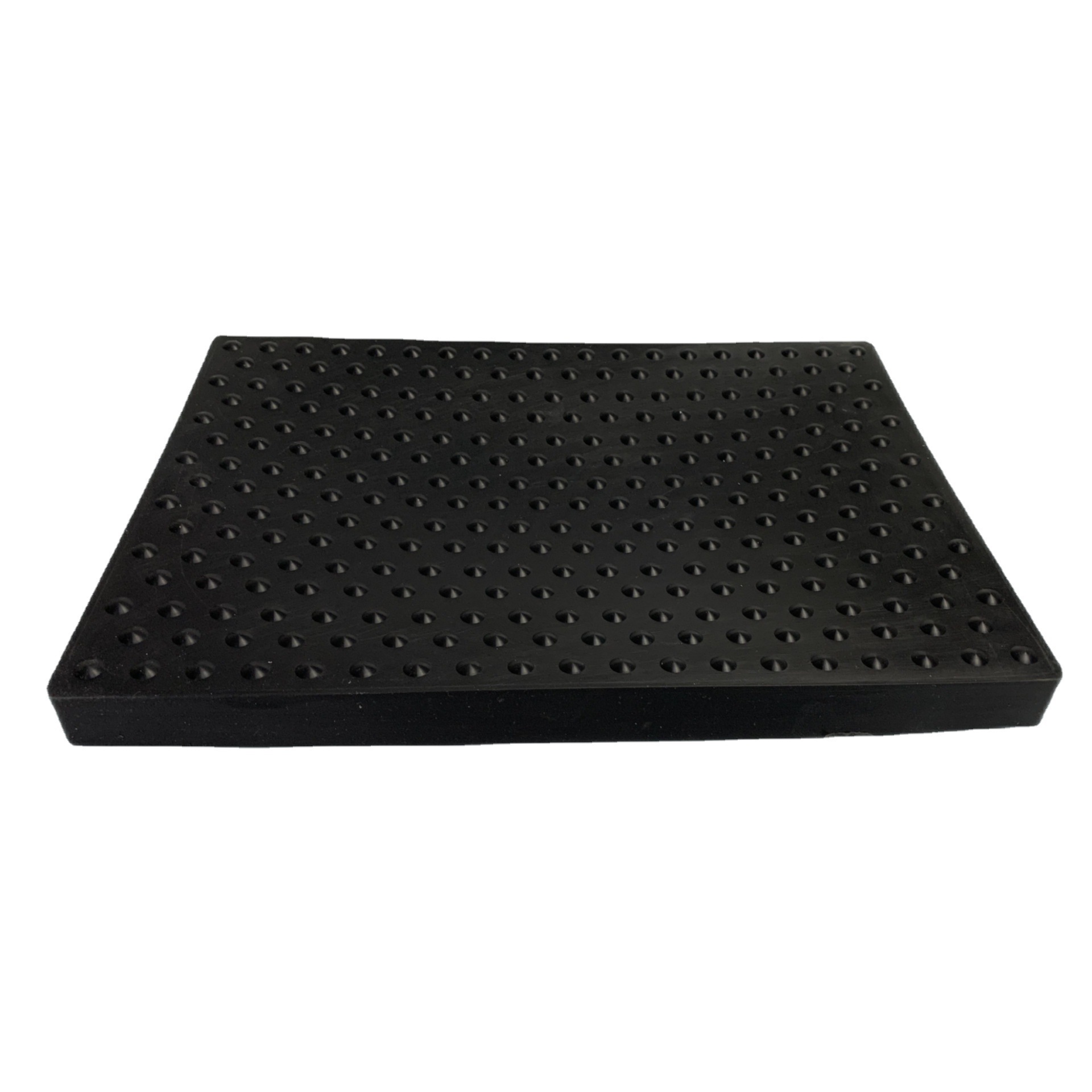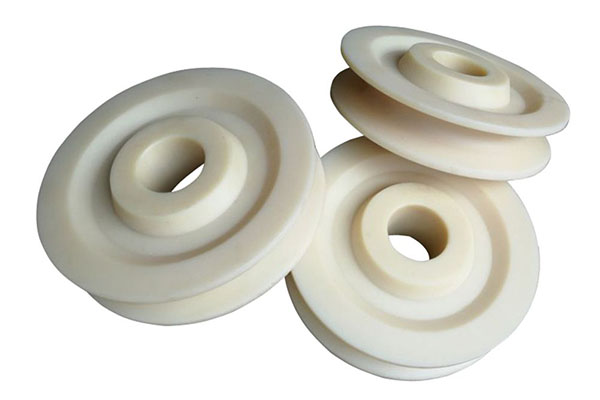Understanding Knit Lines
What are Knit Lines?
Knit lines, also known as weld lines, are a common defect in injection molding. They occur when two or more streams of molten plastic meet and do not fully fuse together. This can happen when there are multiple gates in a mold, when the plastic flows around an obstacle such as an insert or a rib, or when the plastic is injected into a mold cavity that has a complex shape.
Knit lines appear as a visible line or a V-shaped groove on the surface of the molded part. They can be seen on a variety of injection - molded products, for example, on the surface of automotive parts like bumpers or interior trim pieces. In the case of a car bumper, if the plastic melt flows from multiple gates and converges at certain points, knit lines may form, which can be easily observed as faint lines on the smooth surface of the bumper. For electronic product housings, such as the outer shells of smartphones or tablets, knit lines can also be present near areas with complex internal structures or multiple injection points, showing up as a less - smooth and distinct line on the otherwise sleek surface.
Why Do Knit Lines Matter?
Knit lines can have several negative impacts on the quality and performance of injection - molded parts.
Strength and Durability: The area where a knit line forms is typically weaker than the surrounding material. The lack of complete fusion means that the molecular bonds are not as strong. Studies have shown that the strength of a knit - line area can be 40% - 90% of the strength of the base material. For instance, in a structural component like a plastic bracket used in machinery, a knit line could lead to premature failure under load. If the bracket is designed to withstand a certain amount of force but has a knit line running through a critical area, it may break more easily, reducing the overall durability and reliability of the machinery.
Appearance Quality: In products where aesthetics are important, knit lines can be a major drawback. They can make the surface of the product look uneven or marred, which is unacceptable for products like consumer electronics, high - end household appliances, and automotive exteriors. A smartphone with a visible knit line on its back cover may seem defective to the consumer, affecting the brand image and product sales.
Functionality: Knit lines can also affect the functionality of a product. In parts that require a tight seal, such as containers or gaskets, a knit line can create a weak point that may lead to leakage. If a plastic water bottle has a knit line in the sealing area, it may not be able to hold water properly, making it unusable for its intended purpose.
Preventive Measures
Optimizing Mold Design
Gate Location and Size
The gate is the connection point between the runner system and the mold cavity. A well - chosen gate location and size can significantly reduce the formation of knit lines. When the gate is located improperly, the plastic melt may flow unevenly into the mold cavity, leading to early solidification and the formation of knit lines. For example, if the gate is too far from the area where the melt needs to meet, the melt may cool down before it can fully fuse.
As shown in the following contrast diagrams of mold designs with different gate locations (Figure 1), in Design A, the gate is located at one side of the part. When the plastic melt is injected, it has to flow a long distance to meet at the other side, resulting in a high chance of forming knit lines. In Design B, the gate is placed closer to the center of the part, allowing the melt to flow more evenly and reducing the probability of knit - line formation.
**
The size of the gate also matters. A too - small gate can increase the flow resistance of the plastic melt, causing the melt to cool down rapidly and making it difficult for the melt streams to merge properly. On the other hand, a too - large gate may lead to over - filling and other defects. According to experience, for a small - to - medium - sized injection - molded part with a wall thickness of about 2 - 3 mm, the gate diameter can be initially set at 1 - 2 mm and then adjusted according to the actual molding situation.
Ventilation Design
During the injection - molding process, air is trapped in the mold cavity. If this air cannot be effectively discharged, it will prevent the smooth merging of the plastic melt, resulting in knit lines. Therefore, ventilation design is crucial.
One common method is to create venting channels in areas where knit lines are likely to occur. These venting channels are usually narrow grooves with a depth of about 0.01 - 0.03 mm and a width of 3 - 5 mm. For example, in a mold for a large - sized plastic container, venting channels can be opened at the end of the cavity where the melt is expected to meet.
Another option is to use porous steel in the mold. Porous steel has a large number of tiny pores that can allow air to escape while preventing the plastic melt from flowing out. This method is especially useful for complex - shaped molds where it is difficult to create traditional venting channels.
Adjusting Processing Parameters
Temperature Control
Both the barrel temperature and the mold temperature play important roles in preventing knit lines. The barrel temperature determines the fluidity of the plastic melt. If the barrel temperature is too low, the melt viscosity will be high, and the melt will not flow smoothly. As a result, when the melt streams meet, they may not be able to fuse well, forming knit lines. For most common plastics such as ABS, the barrel temperature can be set in the range of 200 - 240 °C.
The mold temperature also affects the cooling rate of the plastic melt. A higher mold temperature can keep the melt in a more fluid state for a longer time, which is beneficial for the fusion of the melt streams at the knit - line area. For example, for a mold making a high - quality plastic product with strict appearance requirements, the mold temperature can be maintained at 60 - 80 °C.
Injection Speed and Pressure
Increasing the injection speed appropriately can make the plastic melt fill the mold cavity more quickly. This reduces the cooling time of the melt during the filling process, ensuring that the melt is still in a fluid state when it meets, which is conducive to reducing knit lines. However, if the injection speed is too high, it may cause problems such as air entrapment and flash.
The injection pressure should be adjusted reasonably to ensure that the plastic melt can smoothly merge at the meeting point. If the injection pressure is too low, the melt may not be able to overcome the flow resistance and reach the desired position, resulting in incomplete filling and knit - line formation. For a general injection - molding process, the injection pressure can be initially set at 80 - 120 MPa and then adjusted according to the actual situation.
Material Selection and Modification
Choosing the Right Material
The choice of plastic material has a great impact on the formation of knit lines. Plastics with good fluidity and an appropriate curing speed are more conducive to reducing knit - line problems. For example, compared with some high - viscosity engineering plastics, polypropylene (PP) has better fluidity. When used in injection - molding processes with complex geometries, PP is less likely to form obvious knit lines.
When selecting materials, it is also necessary to consider the specific requirements of the product. If the product requires high strength and heat resistance, while also needing to minimize knit lines, materials such as modified nylon with improved fluidity can be selected.
Adding Additives
Adding certain additives to the plastic material can improve its fluidity and reduce knit lines. For instance, plasticizers can increase the flexibility and mobility of polymer chains, thereby reducing the viscosity of the plastic melt. A study showed that when adding 3% - 5% of a certain plasticizer to a PVC - based material, the fluidity of the melt increased by about 20%, and the appearance of knit lines on the molded product was significantly reduced.
Lubricants can also play a role. They can reduce the friction between the plastic melt and the mold wall, making the melt flow more smoothly. In a practical case of manufacturing plastic toy parts, adding 1% - 2% of a lubricant additive to the plastic raw material effectively reduced the formation of knit lines on the surface of the toys, improving the overall quality of the products.
Yigu Technology's Perspective
As a non - standard plastic metal products custom supplier, Yigu Technology attaches great importance to preventing knit lines in injection molding. In our experience, a comprehensive approach is essential.
In terms of mold design, we conduct in - depth simulations before manufacturing molds. By using advanced software, we analyze the plastic melt flow path in the mold cavity, precisely locate the gate, and optimize the runner system. This allows us to minimize the occurrence of knit lines from the source. For example, in a project for manufacturing complex - shaped plastic components for the automotive industry, through meticulous mold design optimization, we reduced the visible knit lines on the product surface by over 80%.
When it comes to processing parameters, we have a professional team to monitor and adjust them in real - time. We have a set of strict parameter control standards based on different materials and product requirements. This ensures that the injection molding process is carried out under the most suitable conditions, effectively reducing the formation of knit lines.
Material selection and quality control are also crucial for us. We cooperate with reliable material suppliers and conduct strict inspections on incoming materials. Only materials that meet our high - standard requirements are used in production. This way, we can ensure the stability of material performance and reduce the impact of material factors on knit lines.
In general, with our rich experience and professional technical capabilities, we are committed to providing customers with high - quality injection - molded products with minimal knit - line defects.
FAQ
Q1: Can knit lines be completely eliminated in injection molding?
Knit lines cannot be completely eliminated in injection molding. However, through a series of optimization measures such as optimizing mold design, adjusting processing parameters, and selecting appropriate materials, the formation of knit lines can be significantly reduced. By carefully considering gate location, improving ventilation, controlling temperature, and choosing materials with good fluidity, the impact of knit lines on product quality can be minimized to an acceptable level.
Q2: How does the mold surface finish affect knit lines?
A smooth mold surface finish can reduce the flow resistance of the plastic melt. When the melt flows smoothly, it is less likely to form knit lines. A rough mold surface may cause the melt to flow unevenly, resulting in different flow velocities at the meeting point of the melt streams. This uneven flow can exacerbate the formation of knit lines. For example, in a mold with a rough surface, the melt may be hindered in some areas, leading to early cooling and incomplete fusion when meeting other melt streams.
Q3: Are there any post - processing methods to reduce the visibility of knit lines?
Yes, there are several post - processing methods. Sanding can smooth the surface where the knit lines are located, reducing the height difference of the lines. Polishing further refines the surface, making the knit lines less visible. Painting can cover the knit lines completely, especially for products with a painted surface finish. However, sanding and polishing are more suitable for products with relatively simple shapes, while painting is applicable to a wide range of products but may add additional costs and process steps.
